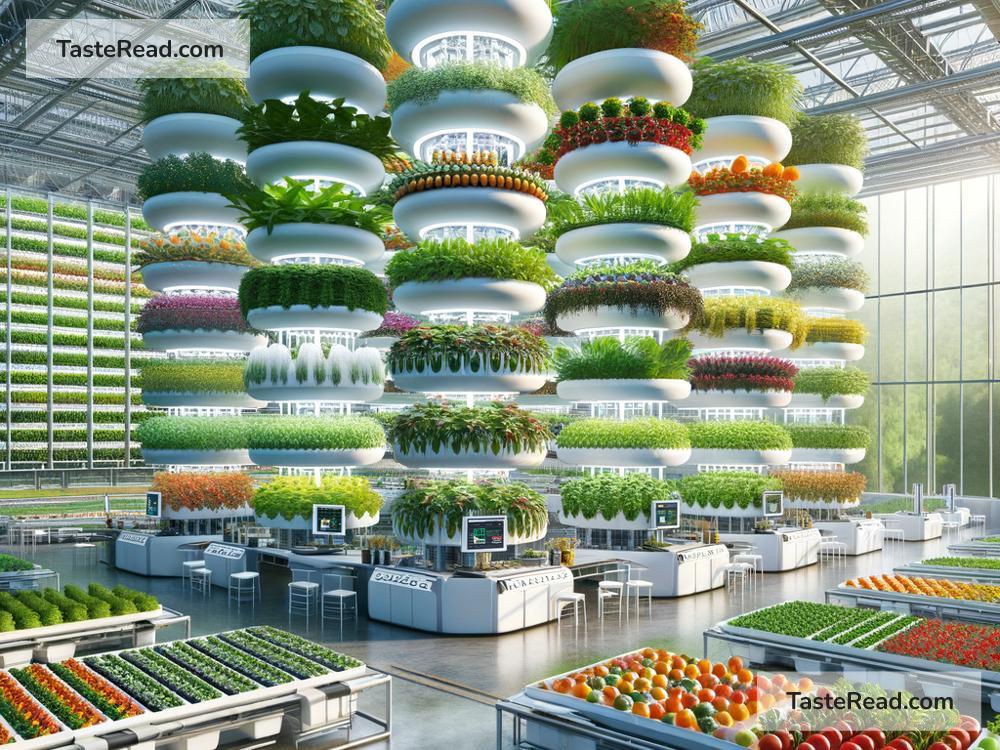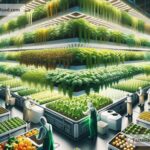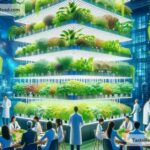The Future of Food and Regenerative Global Solutions
As the world’s population grows and climate change becomes more pressing, how we produce and consume food needs to evolve. The future of food isn’t just about feeding more people—it’s about building systems that focus on sustainability, nutrition, and fairness. To solve today’s challenges, we need regenerative global solutions that restore nature, empower communities, and create healthier environments.
The Food Challenges We Face Today
Food is the foundation of life, but our current food system is facing serious problems. Many people around the world don’t have access to enough food or proper nutrition, while others waste vast amounts of food. Agriculture, which is the backbone of food production, is responsible for nearly 25% of global greenhouse gas emissions. Practices like over-farming, heavy pesticide use, and deforestation are damaging our planet.
At the same time, climate change is making farming harder. Droughts, floods, and shifting seasons mean crops are harder to grow, threatening food supplies everywhere. The solution isn’t just producing more food but doing it smarter. That’s where regenerative solutions step in.
What Are Regenerative Global Solutions?
Regenerative solutions aim to restore the land, the environment, and communities rather than simply “using” them to produce food. They focus on working with nature, not against it. Imagine farming techniques that rebuild soil health, increase biodiversity, and suck carbon out of the air—a true win-win for people and the planet.
Regenerative solutions also pay attention to the social side of food. Fair labor practices, access to education, and equitable food distribution are essential for long-term success. In short, regenerative approaches aim for harmony: between humans and nature, and between different groups of people.
Regenerative Farming: A Powerful Answer
One of the most exciting paths forward is regenerative farming. This method focuses on improving soil health, trapping carbon dioxide, and creating a cycle of renewal. Here are some strategies happening now:
-
Crop Rotation and Diversity: Farmers grow different crops in the same fields at different times. This improves soil health, reduces pests, and strengthens ecosystems.
-
No-Till Farming: Traditional farming involves digging up the soil, which releases carbon and destroys beneficial microorganisms. No-till farming keeps the soil intact and full of nutrients.
-
Agroforestry: This practice integrates trees into farmland. Trees help prevent erosion, improve water systems, and absorb carbon from the atmosphere.
-
Animal Integration: Animals are part of the solution too! Grazing animals, when managed properly, can fertilize the soil naturally and help restore grasslands.
Regenerative farming is already showing success. For instance, in Africa’s Sahel region, local farmers have developed agroforestry practices that are turning desert-like areas into thriving ecosystems. Their methods have increased crop yields, provided shade, and restored biodiversity.
Food Innovations and Technology
The future of food isn’t just about farming—it’s also about what we eat and how we prepare food. Exciting innovations promise to reshape our diets and make them more sustainable.
-
Alternative Proteins: Companies are developing plant-based and lab-grown meats that produce fewer emissions than traditional livestock farming. These products taste like meat but are better for the environment.
-
Vertical Farming: Imagine farms stacked like skyscrapers, growing fruits and vegetables in urban areas. Vertical farms use less water and land and can produce food right where people live.
-
Food Waste Solutions: Technology is being used to track, repurpose, and reduce food waste. Apps connect grocery stores with charities to offer food that’s near expiration to those in need, while compost technology transforms waste into rich fertilizers.
-
Precision Agriculture: Advanced sensors, drones, and AI are helping farmers monitor crops, predict yields, and use resources more efficiently. This leads to less waste and better production.
These innovations represent a future where science and technology help us eat smarter while reducing harm to the planet.
Changing Habits for a Healthier Future
While big changes in farming and technology offer hope, individual habits matter too. Here are small steps you can take to create a better food system:
-
Eat Local: Supporting local farmers cuts down on transportation emissions and ensures fresher food.
-
Reduce Food Waste: Be mindful of how much food you buy and find creative ways to use leftovers.
-
Choose Sustainable Options: Look for foods with labels like “organic,” “fair trade,” or “regenerative.” These products often prioritize better farming practices.
-
Embrace Plant-Based Meals: Even reducing meat consumption by a little can have big environmental benefits.
Every choice you make affects the food system. Changing what’s on your plate might seem small, but it adds up when millions of people do the same.
Collaboration Is Key
For a truly regenerative food system, collaboration is essential. Farmers, scientists, governments, businesses, and consumers all have a role to play. Governments can support laws that protect the environment, while companies can invest in sustainable strategies. Scientists and innovators can continue to create new solutions. Importantly, consumers should demand better practices and products.
Global efforts like the United Nations’ Sustainable Development Goals (SDGs) aim to reduce hunger, improve health, and protect the planet. By working together, we can address food challenges with long-lasting solutions.
The Future Is Bright If We Act Now
The future of food is exciting! Regenerative global solutions have the power to heal our planet, feed more people, and create fair systems for everyone. While challenges remain, innovation and collaboration are lighting the way toward a sustainable future. Whether through farming, technology, or small daily habits, we all have a role to play in building this brighter future.
So let’s embrace change, work together, and create a food system that nourishes both people and the Earth. Regenerative solutions aren’t just for farmers or scientists—they’re for all of us. Together, we can ensure the future of food is one that benefits everyone and everything.


